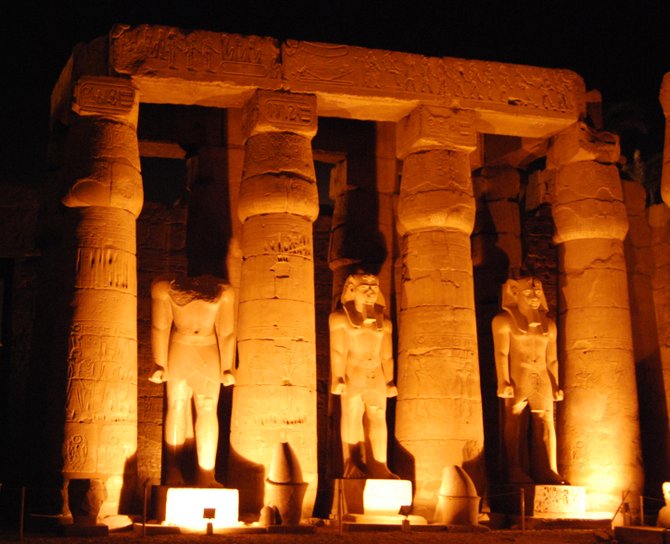 Facebook
Facebook
 X
X
 Instagram
Instagram
 TikTok
TikTok
 Youtube
Youtube

Camels, pyramids and mummies, oh my! This ancient civilization features some of the most famous attractions in the world. Consider these tips from my itinerary and you’ll be walking like an Egyptian in no time.
Cairo is the hustling, bustling capital of Egypt. The Hilton Ramses has nice rooms and great views of the city. Just know that the traffic in this city never dies – you’ll hear horns honking all day and all night, no matter how high up your room is.
Visit the Khan el Khalili bazaar in Cairo if you’re looking to buy Egyptian goods. Be wary of silver and gold jewelry vendors, as they will inevitably try to rip you off. I was surprised by the large variety of embroidered kaftans available, and I snagged several beautifully dyed ones for a great price.
There are several breathtaking mosques in Cairo; the ornate Mohamed Ali Mosque has stunning architecture and panoramic views of the city. Seeing the Sphinx and the pyramids requires a short trip from Cairo to Giza. Spoiler alert: the Sphinx is much smaller than you’d imagine! I know this sounds incredibly touristy, and it is, but I highly recommend taking a camel ride to the pyramids. If you cannot bear the idea of taking a camel, a horse is a more low-key option.
South of Cairo lies the ancient city of Luxor. Close to Luxor you can find Tutankhamen's (King Tut's) tomb as well as a dozen royal mummies in the Valley of the Kings. Claustrophobics beware: the ancient passageways to the tombs were designed to keep scavengers out, so tunnels tend to get extremely narrow and hot in some places. Near the Valley of the Kings beneath the cliffs of Deir al Bahari you’ll find the mortuary temple of Queen Hatshepsut. This awe-inspiring shrine, dedicated to the Egyptian god of sun, Amon-Ra, should not be missed.
My personal favorite site in Egypt was the Karnak and Luxor temple ruins. My recommendation is that you visit at night. The temperature will be cooler, the crowds will have gone home, and the temples will be beautifully illuminated with lights. A private guide can be hired for less than $20 (a few are usually standing around the ruins). Make sure you find out what time the temples close so you can allow yourself adequate visiting time (about 2 hours or so).
Luxor also has a great night market where you can purchase art, spices and jewelry among other Egyptian wares and crafts. Here I purchased an amazing painting of the Nile on a scroll of papyrus. If you need to take a load off your feet, you can take an open-top horse carriage around town.
Cruising down the Nile is another Egyptian experience not to be missed. Boat men can be easily hired along the river, or ask your hotel to make arrangements.


Camels, pyramids and mummies, oh my! This ancient civilization features some of the most famous attractions in the world. Consider these tips from my itinerary and you’ll be walking like an Egyptian in no time.
Cairo is the hustling, bustling capital of Egypt. The Hilton Ramses has nice rooms and great views of the city. Just know that the traffic in this city never dies – you’ll hear horns honking all day and all night, no matter how high up your room is.
Visit the Khan el Khalili bazaar in Cairo if you’re looking to buy Egyptian goods. Be wary of silver and gold jewelry vendors, as they will inevitably try to rip you off. I was surprised by the large variety of embroidered kaftans available, and I snagged several beautifully dyed ones for a great price.
There are several breathtaking mosques in Cairo; the ornate Mohamed Ali Mosque has stunning architecture and panoramic views of the city. Seeing the Sphinx and the pyramids requires a short trip from Cairo to Giza. Spoiler alert: the Sphinx is much smaller than you’d imagine! I know this sounds incredibly touristy, and it is, but I highly recommend taking a camel ride to the pyramids. If you cannot bear the idea of taking a camel, a horse is a more low-key option.
South of Cairo lies the ancient city of Luxor. Close to Luxor you can find Tutankhamen's (King Tut's) tomb as well as a dozen royal mummies in the Valley of the Kings. Claustrophobics beware: the ancient passageways to the tombs were designed to keep scavengers out, so tunnels tend to get extremely narrow and hot in some places. Near the Valley of the Kings beneath the cliffs of Deir al Bahari you’ll find the mortuary temple of Queen Hatshepsut. This awe-inspiring shrine, dedicated to the Egyptian god of sun, Amon-Ra, should not be missed.
My personal favorite site in Egypt was the Karnak and Luxor temple ruins. My recommendation is that you visit at night. The temperature will be cooler, the crowds will have gone home, and the temples will be beautifully illuminated with lights. A private guide can be hired for less than $20 (a few are usually standing around the ruins). Make sure you find out what time the temples close so you can allow yourself adequate visiting time (about 2 hours or so).
Luxor also has a great night market where you can purchase art, spices and jewelry among other Egyptian wares and crafts. Here I purchased an amazing painting of the Nile on a scroll of papyrus. If you need to take a load off your feet, you can take an open-top horse carriage around town.
Cruising down the Nile is another Egyptian experience not to be missed. Boat men can be easily hired along the river, or ask your hotel to make arrangements.